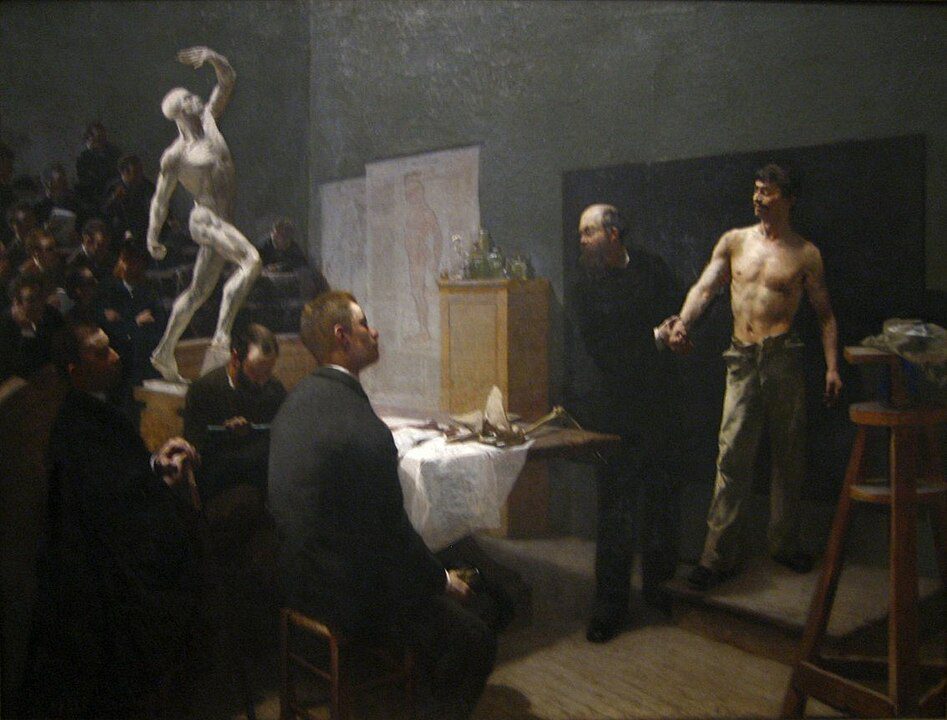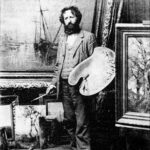
The École des Beaux-Arts in Paris is one of the most iconic institutions in the history of art education. Since its founding in 1648, it has set a gold standard for artistic training, influencing generations of painters, sculptors, and architects. Known for its rigorous academic curriculum and emphasis on classical ideals, it has produced some of the most celebrated artists in history. Its legacy has transcended borders, inspiring schools and art movements around the globe.
This institution was not merely an art school but a cultural hub, shaping the visual identity of Western civilization. From the grandeur of Neoclassicism to the innovations of Impressionism, its alumni have consistently pushed the boundaries of art. Its architectural influence is equally profound, with its Beaux-Arts style defining landmarks from Paris to New York. Exploring the École’s history offers insight into how one institution shaped the artistic and architectural fabric of the world.
Founded during a time of artistic centralization, the École became synonymous with technical precision and intellectual discipline. Its teachings emphasized mastery of form, proportion, and historical themes, aligning with the cultural priorities of France’s monarchy. This fusion of tradition and innovation has allowed the École to remain relevant across centuries. Its story is a testament to the enduring power of education in the arts.
This article examines the École’s founding, its evolution during pivotal centuries, and the luminaries it produced. From Jacques-Louis David to Claude Monet, and from Auguste Rodin to Charles Garnier, the alumni of the École reflect its profound impact on global culture. By tracing its legacy, we see how it served as a cradle for artistic excellence and a beacon of inspiration. Through this exploration, the École’s place in the annals of history becomes unmistakable.
The Founding and Early Years (1648–1800)
The École des Beaux-Arts originated as the Académie Royale de Peinture et de Sculpture, founded in 1648 under King Louis XIV. Its primary aim was to consolidate French art education, elevating the monarchy’s prestige and creating a unified cultural identity. The Académie centralized artistic training in a manner unprecedented in Europe, emphasizing the promotion of French ideals. This focus on state-sponsored art established a precedent that lasted for centuries.
From its inception, the school’s curriculum prioritized classical training, drawing heavily from Greco-Roman and Renaissance traditions. Students practiced by studying ancient sculptures, mastering anatomy, and replicating the works of old masters. These exercises were designed to instill technical precision and an understanding of artistic harmony. This emphasis on classical ideals influenced the Baroque and Rococo art styles that flourished in France during this period.
Royal patronage was integral to the Académie’s growth, with King Louis XIV playing a particularly active role. Under his reign, the school supplied artists for monumental projects such as the Palace of Versailles. These artists created grand paintings, sculptures, and decorative works that glorified the monarchy and symbolized France’s cultural dominance. This symbiosis between the crown and the Académie helped secure its place as a cornerstone of French culture.
The French Revolution brought upheaval, transforming the Académie into the Académie des Beaux-Arts in 1795. With the monarchy abolished, the institution adapted to serve the Republic, continuing its focus on classical art while expanding its reach. Despite these political changes, the school retained its commitment to fostering artistic excellence. This resilience allowed it to thrive in the tumultuous years that followed, setting the stage for its 19th-century transformation.
The École’s Transformation During the 19th Century
The 19th century was a period of expansion and redefinition for the École des Beaux-Arts, particularly under Napoleon I. Napoleon sought to use art as a tool for statecraft, reorganizing the École to align with his vision of French cultural supremacy. This reorganization strengthened the institution’s infrastructure and global influence, as its graduates were dispatched across Europe and beyond. The École became an international model for art education, solidifying its prestige.
One of the most significant developments during this period was the introduction of the Prix de Rome competition. This highly coveted award sent winners to Rome for several years to study classical art and architecture firsthand. The competition not only reinforced the École’s emphasis on classical traditions but also fostered a spirit of rivalry among its students. Many of the École’s most famous alumni achieved recognition through this prestigious program.
The curriculum also underwent significant innovations, including the addition of life drawing classes and the study of plaster casts. These practices enhanced students’ understanding of anatomy, texture, and proportion, ensuring they achieved technical mastery. History painting, which focused on grand narratives and mythological themes, remained the pinnacle of achievement. This style, defined by polished technique and idealized forms, epitomized the academicism of the École.
The establishment of the architectural department in 1816 marked another major milestone. The department emphasized the principles of symmetry, order, and grandeur, giving rise to the Beaux-Arts architectural style. This style influenced landmark buildings in France and around the world, blending classical aesthetics with functional design. The École’s architects became leading figures in urban planning, shaping the physical landscapes of cities globally.
Famous Artists and Alumni
The École des Beaux-Arts has been home to some of history’s most influential artists, whose works defined artistic movements and eras. Jacques-Louis David, a pioneer of Neoclassicism, exemplified the school’s emphasis on discipline and precision. His masterpiece, The Death of Marat, became a symbol of revolutionary fervor while showcasing the classical ideals he mastered. David’s influence extended to his student Jean-Auguste-Dominique Ingres, whose works like La Grande Odalisque demonstrated unmatched mastery of line and form.
Eugène Delacroix, a leader of the Romantic movement, used dramatic compositions and emotive themes to challenge academic conventions. His iconic painting, Liberty Leading the People, reflects his ability to combine historical themes with vibrant energy. Impressionist painters such as Claude Monet and Pierre-Auguste Renoir, though they rebelled against the École’s teachings, benefitted from its foundational training. Monet’s Impression, Sunrise and Renoir’s lively depictions of modern life transformed the art world.
Architects like Charles Garnier and Louis Sullivan expanded the École’s influence into architecture. Garnier’s Palais Garnier remains a symbol of Beaux-Arts opulence, blending classical grandeur with ornate detail. Sullivan, known as the “Father of Skyscrapers,” adapted the school’s principles to American architecture, creating innovative designs that shaped urban skylines. Together, they exemplified the École’s ability to adapt classical ideals to modern contexts.
The École also nurtured sculptors like Auguste Rodin and Jean-Baptiste Carpeaux, whose works redefined their medium. Rodin’s The Thinker challenged traditional sculptural conventions, while Carpeaux’s Dance brought vitality to public monuments. Notable female alumni such as Rosa Bonheur and Mary Cassatt broke barriers in the art world, paving the way for future generations. Bonheur’s realistic animal paintings and Cassatt’s Impressionist portraits exemplify the École’s broad impact.
The École’s Influence on Global Art and Architecture
The École des Beaux-Arts’ influence extended far beyond France, shaping art and architecture across continents. Its emphasis on classical training and rigorous discipline attracted students from Europe, the Americas, and Asia. Many returned to their home countries with techniques and principles that they adapted to local traditions. This cultural exchange transformed the École into a global hub of artistic development, influencing countless movements and institutions.
One of the most prominent examples of its influence is Beaux-Arts architecture, which became synonymous with grandeur and ornamentation. In the United States, this style dominated public buildings, as seen in the design of Grand Central Terminal and the U.S. Capitol’s expansions. American architects such as Louis Sullivan and Daniel Burnham incorporated these principles, blending classical symmetry with modern functionality. This architectural legacy reshaped urban landscapes, emphasizing the importance of proportion and detail in civic design.
The École also played a role in shaping and resisting major art movements of the 19th and 20th centuries. While academicism upheld traditional ideals, many alumni were instrumental in pioneering avant-garde styles. Impressionism, Fauvism, and even elements of Cubism emerged as reactions to academic norms, yet their leaders often credited the École’s foundational training. This tension between tradition and innovation fueled the school’s dynamic reputation as a crucible for artistic evolution.
Through its international alumni and cross-cultural exchanges, the École became a symbol of artistic diplomacy. Its graduates introduced French artistic values to new regions, reinforcing France’s position as a cultural leader. This spread of ideas fostered a shared artistic vocabulary while allowing local adaptations. The École’s global reach ensured its enduring influence on art and architecture worldwide.
Challenges and Changes in the 20th Century
The 20th century brought significant challenges to the École des Beaux-Arts as modern art movements gained prominence. Avant-garde styles such as Cubism, Surrealism, and Abstract Expressionism rejected the academic principles the school upheld. This shift reflected broader societal changes, as artists prioritized individuality and experimentation over traditional technical mastery. The École faced growing criticism for being overly rigid and out of touch with contemporary trends.
In response, the École implemented reforms to modernize its curriculum and embrace a wider range of perspectives. Post-World War I, the institution began incorporating elements of modernist theory alongside its classical training. The inclusion of women and international students marked a turning point, fostering a more inclusive environment. These changes were crucial in maintaining the École’s relevance in an increasingly globalized and diverse art world.
Despite these efforts, the École’s dominance diminished as newer art schools emerged with a focus on contemporary practices. Institutions such as the Bauhaus in Germany and the Art Students League in the United States drew attention away from the École. These schools prioritized creativity and conceptual thinking, contrasting sharply with the École’s emphasis on technique and tradition. The competitive landscape reshaped perceptions of what constituted a premier art education.
However, the École remained an enduring symbol of excellence, with its history and alumni serving as a source of prestige. Its classical training continued to attract students seeking a solid technical foundation, even in a changing art world. By adapting to modern demands while preserving its heritage, the École navigated the challenges of the 20th century. This balance between tradition and evolution allowed it to retain its status as a revered institution.
The Legacy of the École des Beaux-Arts Today
Today, the École des Beaux-Arts remains a beacon of artistic tradition and innovation. Its curriculum continues to emphasize classical techniques while integrating contemporary approaches, offering a balanced education. The school’s alumni remain influential in both traditional and modern artistic circles, ensuring its legacy endures. Exhibitions and programs celebrating its history further reinforce its role as a cultural touchstone.
The architectural influence of the École remains evident in cities around the world. Iconic landmarks like the Palais Garnier in Paris and New York’s Grand Central Terminal stand as testaments to its Beaux-Arts legacy. This architectural tradition continues to inspire designers seeking to blend classical elegance with modern practicality. The École’s emphasis on harmony and proportion remains a cornerstone of architectural education globally.
As a symbol of cultural heritage, the École des Beaux-Arts embodies the enduring power of artistic excellence. Its contributions to painting, sculpture, and architecture have left an indelible mark on the art world. By producing artists who pushed boundaries while mastering tradition, the École fostered a dynamic and lasting legacy. Its ongoing influence underscores the importance of education in shaping art and culture.
In the modern era, the École’s relevance extends beyond its walls. Its teachings have inspired countless institutions and movements, bridging the gap between history and contemporary practice. The École des Beaux-Arts stands as a reminder that art, at its core, is a reflection of both tradition and transformation. Its legacy continues to inspire generations of artists, architects, and cultural visionaries.
Conclusion
The École des Beaux-Arts stands as a monumental institution in the history of art and architecture. From its founding in 1648 to its enduring presence today, it has shaped the trajectory of artistic education and innovation. Its rigorous curriculum and commitment to classical ideals provided the foundation for countless masterpieces. Simultaneously, its alumni challenged conventions, pushing the boundaries of creativity and redefining the art world.
Through its influence on painting, sculpture, and architecture, the École established itself as a global cultural force. Its role in fostering movements such as Neoclassicism and Beaux-Arts architecture underscores its profound impact. Even as the art world evolved, the École adapted, balancing its traditions with the demands of modernity. Its resilience and adaptability have solidified its place as a cornerstone of artistic excellence.
The stories of its alumni, from Jacques-Louis David to Henri Matisse, highlight the École’s ability to nurture both tradition and innovation. These artists and architects embody the school’s dual legacy, blending technical mastery with creative vision. Their works continue to inspire, ensuring the École’s influence is felt far beyond its physical location.
As we reflect on the École des Beaux-Arts, its significance becomes clear. It is not merely a school but a symbol of the enduring power of art to shape culture, identity, and society. Its history reminds us of the transformative potential of education, making it a timeless institution in the story of human creativity.
Key Takeaways
- The École des Beaux-Arts shaped Western art and architecture for centuries.
- Its classical curriculum influenced movements from Neoclassicism to Impressionism.
- Alumni include Jacques-Louis David, Claude Monet, Henri Matisse, and Charles Garnier.
- Beaux-Arts architecture transformed urban landscapes globally.
- The school remains a symbol of tradition, innovation, and artistic excellence.
FAQs
- What is the École des Beaux-Arts?
The École des Beaux-Arts is a prestigious art school in Paris, renowned for its classical training and influence on art and architecture worldwide. - When was the École des Beaux-Arts founded?
The school was established in 1648 as the Académie Royale de Peinture et de Sculpture under King Louis XIV. - Who are some famous alumni of the École des Beaux-Arts?
Notable alumni include Jacques-Louis David, Eugène Delacroix, Claude Monet, Henri Matisse, and Charles Garnier. - What is Beaux-Arts architecture?
Beaux-Arts architecture combines classical principles of symmetry and proportion with ornate details, influencing landmarks like Grand Central Terminal. - Is the École des Beaux-Arts still relevant today?
Yes, it remains a respected institution blending classical techniques with modern approaches, inspiring artists and architects globally.




